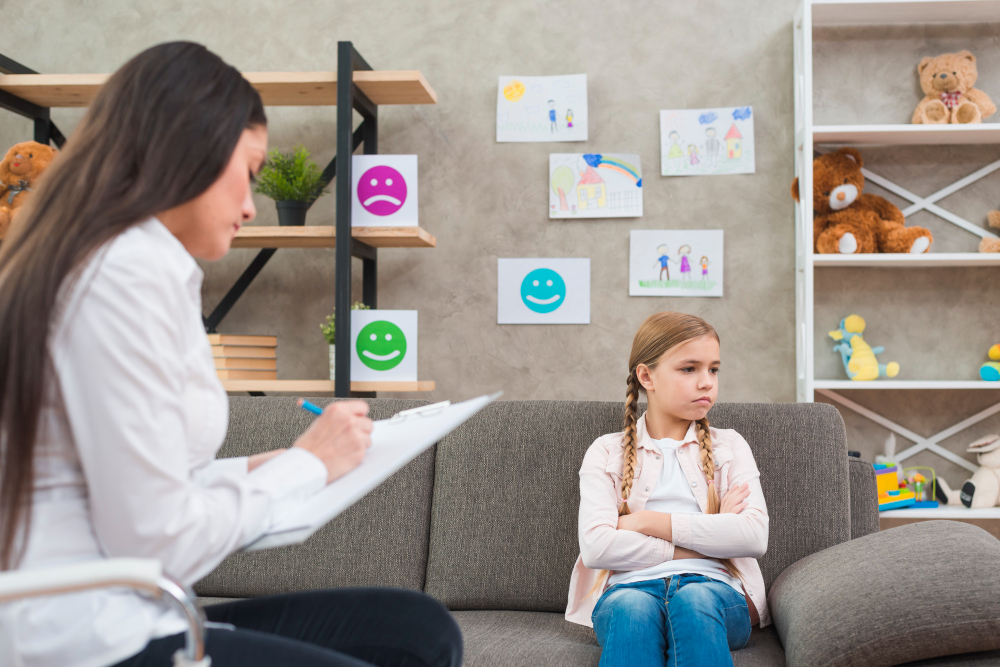Which Therapies Can Help With Autism?
There is no single treatment for autism spectrum conditions at the moment (ASD). However, there are a variety of approaches that can be used to reduce symptoms and increase abilities. If people with ASD receive the right therapies and interventions, they have the best opportunity of utilising all of their strengths and capabilities.
The most effective therapy and interventions are frequently unique to each individual. Most persons with ASD, on the other hand, benefit from highly structured and specialised programmes. Autism treatment can help people with daily activities and minimise symptoms in some circumstances.
Early diagnosis and intervention, such as during preschool or before, are more likely to have a significant favourable impact on symptoms and later skills along with medications for autism and adhd.
Therapies for Autism
-
Behaviour Management Theory
Behaviour management therapy aims to reward desired behaviours while reducing undesirable ones. It also recommends what caregivers should do before, during, after, and in between periods of troublesome behaviours. Applied behaviour analysis (ABA), a generally established approach that tracks a child’s progress in developing his or her skills, is frequently used in behavioural treatment.
-
Cognitive Behaviour Therapy
The relationship between thoughts, feelings, and behaviours is the emphasis of cognitive behaviour therapy. The therapist, the person with autism spectrum disorder (ASD), and/or the parents collaborate to develop specific therapeutic goals. During the sessions, the autistic person learns to recognise and adjust thoughts that contribute to negative feelings or behaviours in certain situations. Treatment for cognitive behaviour therapy is divided into phases. It is, however, tailored to the strengths and limitations of the individuals. According to research, this treatment option for autism assists people in coping with anxiety. It can also assist some persons with autism in dealing with social situations and recognising emotions.
-
Early intervention
A young child’s brain is still maturing throughout this time, making it more adaptable than at earlier years. Treatments have a better chance of being effective in the long run because of this adaptability. Early interventions provide children not only the finest possible start in life, but also the highest chance of reaching their full potential. This is the best therapy for autistic children.
-
Joint attention therapy
Many people with autism have trouble with joint attention, which is the capacity to share focus on an object or region with another person, according to research. Following someone else’s gaze or using a pointed finger to look at something are examples of shared attention skills. Communication and language learning require shared attention. Joint attention therapy focuses on developing certain shared attention skills, such as:
Pointing
Showing
Coordinating a person’s and an object’s gazes
-
Medication treatment
There is currently no treatment for autism spectrum disorder (ASD) or all of its symptoms. However, some drugs can aid in the treatment of specific ASD symptoms, particularly certain behaviours.
Medication is frequently used by healthcare experts to address a specific behaviour, such as self-injury or violence. Minimizing a symptom allows an autistic person to concentrate on other things, such as learning and conversation. Medication is most effective when combined with behavioural therapy, according to research.
-
Nutritional therapy
Children with autism spectrum disorder (ASD) may not receive the nourishment they require for proper growth and development for a variety of reasons. Because of how certain foods feel in their mouths, some children with autism will only eat them. They may also avoid certain foods because they are associated with stomach pain or discomfort. In the hopes of minimising autistic symptoms, some youngsters are put on restricted diets.
-
Occupational therapy
Occupational therapy for autism assists people with autism spectrum disorder (ASD) in completing daily tasks by identifying and maximising their requirements, abilities, and interests.
-
Parent-mediated therapy
Parents learn treatment techniques from specialists and administer particular therapies to their own children through parent-mediated therapy. This method provides constant reinforcement and teaching to children with autism spectrum disorder (ASD) throughout the day. Parents can also undertake some therapies with children who are at risk of developing autism but are too young to receive a diagnosis.
-
Physical therapy
Physical autism therapy consists of activities and exercises designed to improve motor skills, strength, posture, and balance. This sort of therapy, for example, tries to assist a child improve muscle control and strength so that he or she can play with other kids more readily. Movement issues are typical in children with autism spectrum disorder (ASD), and many of them need physical therapy.
-
Social skills training
Children are taught the abilities they need to engage with others through social skills training. It entails encouraging and repeating specific desired actions. For example, the Children’s Friendship Training intervention assists primary school-aged children in improving a variety of social skills like conversation, taking care of teasing, good sportsmanship.
-
Speech-language therapy
People with autism spectrum disorder (ASD) can benefit from speech-language therapy to improve their ability to communicate and interact with others. Emphasis is led on learning verbal and nonverbal communication.





